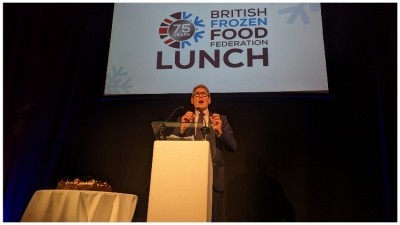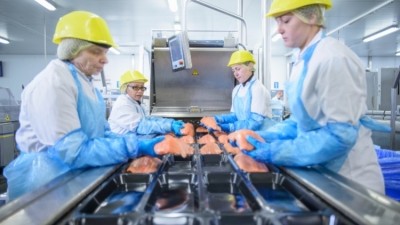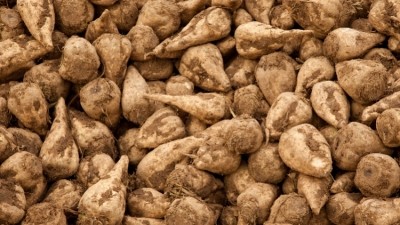Long read
Why is frozen food so popular right now?

The concept of frozen food has been around since the mid-19th century when manufacturers and distributors started looking for ways to preserve produce during long journeys across the sea.
Since then, the technology has advanced greatly but serves the same fundamental purpose, and following the conclusion of the second world war, a variety of frozen products became commonplace in grocery stores around the UK.
Long considered a more affordable but perhaps lower quality alternative to fresh produce, new data suggests that this perspective might be shifting. According to a recent Kantar study, produced on the behalf of the British Frozen Food Federation (BFFF), the second quarter of 2023 saw a 1.6% year-on-year increase in volume sales of frozen food, translating to an extra 7.6m tonnes of products.
This rise in volume was mainly driven by a growth in demand for basics such as frozen vegetables, meat and poultry, potato products and pizzas. More indulgent items such as ice cream and confectionery actually saw a dip in sales.
Competitive on price
Like many industry sectors, the lasting impact of Covid, the war in Ukraine and inflation has presented challenges to frozen food manufacturers. Input costs have risen sharply and supply chains in Europe and beyond are facing ongoing disruption.
However, according to BFFF chief executive Rupert Ashby, the subsequent cost-of-living crisis that has resulted from these global events has caused consumers to reassess how they spend their money in a bid to find more affordable alternatives.
Ashby believes that this has led to frozen products becoming a weekly shop “staple” for more people across the UK due to their affordability.
“Frozen food provides a solution to many shoppers looking to stretch their budget and continues to prove itself as a tasty, nutritious and affordable way of stocking our kitchens,” he told Food Manufacture.
Quorn Foods, which manufactures a number of vegetarian and vegan frozen products, has tailored its range with price in mind.
“We expect value and affordability to remain key, as inflation and cost of living pressures continue,” Gill Riley, consumer director at Quorn, noted.
“With great value ‘big bags’ of Quorn alternatives, shoppers can ensure they are well stocked to feed the whole family, across a range of different meals.”
Cutting out waste
According to the BFFF, UK households waste 4.5m tonnes of food every year with as much as 50% of fresh produce wasted. This is most often caused by people making more food than they can eat, and/or due to food being left in the fridge for too long.
Frozen food, however, boasts a much longer shelf-life – an attribute that Julian Wild, a non-executive director at Rollits and food analyst, believes has become a key consideration for money and environmentally conscious consumers.
“Shoppers don’t want to be throwing away out of date products [and] frozen clearly reduces waste,” he pointed out.
In fact, according to Ashby, an average family “could save approximately £720 per year” by adopting simple waste cutting measures.
Its extended shelf-life also offers more flexibility in the frozen supply chain, as Ashby explained: “Fresh produce, such as fruit and vegetables, is highly perishable and has a short shelf life in comparison to frozen food. [Therefore], fresh food must be quickly transported to the end destination, meaning expensive forms of transport, such as air freight, are used.
“Producers and retailers must also account for fresh produce becoming damaged or spoiled before being sold.”
Taste is still number one
The potential cost savings associated with frozen food have undoubtedly played a part in the category’s growing popularity, but taste remains a major determinant of consumer choice.
With this in mind, Quorn has invested heavily in consumer research, taste and sensory technology to ensure it is able to attract and retain customers.
“In a competitive market, great tasting products are even more important, driving repeat purchase and building trust and loyalty in our brand,” Riley added.
Meanwhile, Italian restaurant chain Zizzi (which entered the frozen food market in 2020) is focused on replicating the taste of its stone baked restaurant pizzas in the supermarket.
“A pizza cooked from frozen has a crispier base,” highlighted the brand’s retail and grocery director Rachel Hendry. “We have invested in the quality of our frozen range by enhancing the prebaking time of our Rustica pizza bases and introducing more browning on the base.”
Now stocked in Tesco, Sainsbury’s and Waitrose, Hendry credits its early success to the combination of “affordable quality”.
Moreover, while many consumers may hold onto the belief that frozen is not of the same quality as fresh, the frozen sector is beginning to challenge those perceptions.
Ashby describes this as a common misconception: “Fresh foods lose their nutritional value over time, whereas freezing food locks in vital nutrients, vitamins and flavours, preserving the quality and taste of foods for much longer.”
Wild echoed this perspective, stating that many products boast “far better quality when frozen”.
Wild added: “In my opinion frozen pizzas produce a better end-product than chilled and are usually cheaper.”
Innovation is key
Like any sector though, the frozen category will need to keep on its toes, ensuring it remains relevant and exciting. Both Ashby and Hendry agreed finding new ways to appeal to customers has - and will continue to be - central to the category’s growth.
“We have added excitement and to our pizzas which come with a mini chilli or basil oil to drizzle on top after baking,” offered Hendry as an example of Zizzi’s innovation.
Quorn has also been looking for ways to improve its offering with the recent unveiling of a new QR code feature, which was designed to support visually impaired shoppers.
The ‘NaviLens technology’ involves a barcode which, when scanned, prompts the ingredients, preparation instructions and recycling information to be read aloud through a mobile device.
Moreover, while the latest data showed that premium products were not driving the recent growth in volumes, Ashby expects this to change.
“This change in consumer spending habits and opinions has led to a growth in premium products, and we expect to see further innovation and variety in this area as consumers continue to swap eating out for eating at home to save money,” he said.



















